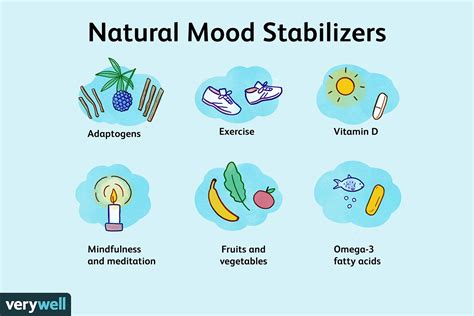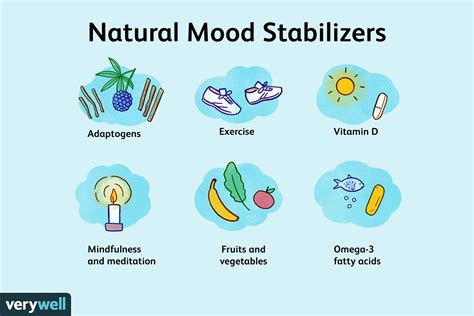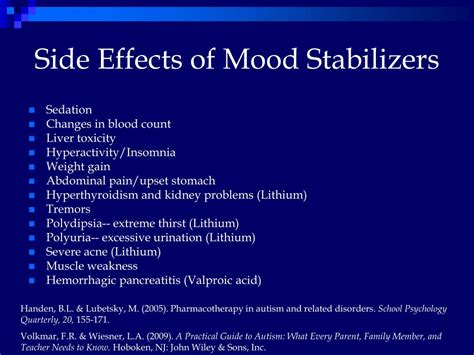Intro
Discover mood stabilizers for bipolar disorder, including lithium, valproate, and carbamazepine, to manage symptoms and prevent episodes, promoting emotional balance and stability.
Bipolar disorder is a complex mental health condition that affects millions of people worldwide, causing significant disruptions to their daily lives. One of the primary treatment options for managing the symptoms of bipolar disorder is the use of mood stabilizers. These medications have been shown to be effective in reducing the severity and frequency of mood episodes, allowing individuals to lead more stable and productive lives. In this article, we will delve into the world of mood stabilizers, exploring their benefits, working mechanisms, and the various types available.
The importance of mood stabilizers in the treatment of bipolar disorder cannot be overstated. By regulating mood swings and preventing extreme episodes of mania or depression, these medications enable individuals to better manage their condition and improve their overall quality of life. Moreover, mood stabilizers can also help to reduce the risk of relapse, which is a common concern for those living with bipolar disorder. With the right treatment plan, individuals can learn to cope with their condition and achieve a sense of stability and normalcy.
As we explore the topic of mood stabilizers, it is essential to understand the complexities of bipolar disorder and the various ways in which these medications can impact the condition. From the benefits of lithium to the effectiveness of anticonvulsant medications, we will examine the different types of mood stabilizers and their unique characteristics. By providing a comprehensive overview of mood stabilizers, we hope to empower individuals with bipolar disorder and their loved ones with the knowledge and understanding necessary to make informed decisions about their treatment.
Mood Stabilizers: An Overview

There are several types of mood stabilizers available, each with its unique mechanism of action and benefits. Lithium, for example, is one of the most commonly used mood stabilizers and has been shown to be effective in reducing the severity and frequency of mood episodes. Anticonvulsant medications, such as valproate and carbamazepine, are also commonly used as mood stabilizers and have been found to be effective in managing the symptoms of bipolar disorder.
Benefits of Mood Stabilizers
The benefits of mood stabilizers are numerous and well-documented. Some of the most significant advantages of these medications include: * Reduced severity and frequency of mood episodes * Improved mood stability and reduced risk of relapse * Enhanced quality of life and increased productivity * Reduced symptoms of anxiety and depression * Improved sleep patterns and reduced fatigueTypes of Mood Stabilizers

Working Mechanisms of Mood Stabilizers
The working mechanisms of mood stabilizers are complex and not fully understood. However, research suggests that these medications work by regulating the levels of certain neurotransmitters in the brain, such as serotonin and dopamine. By stabilizing the levels of these neurotransmitters, mood stabilizers can help to reduce the severity and frequency of mood episodes and improve mood stability.Side Effects of Mood Stabilizers

It is essential to note that the side effects of mood stabilizers can vary depending on the specific medication and individual. It is crucial to work closely with a healthcare provider to monitor side effects and adjust the treatment plan as needed.
Practical Tips for Managing Side Effects
There are several practical tips that can help to manage the side effects of mood stabilizers. Some of the most effective strategies include: * Drinking plenty of water to stay hydrated * Eating a healthy and balanced diet to manage weight gain * Engaging in regular exercise to improve mood and reduce fatigue * Getting enough sleep to reduce drowsiness and improve overall healthConclusion and Future Directions

As research continues to evolve, we can expect to see new and innovative treatments for bipolar disorder emerge. From the development of new medications to the use of alternative therapies, such as cognitive-behavioral therapy and mindfulness-based interventions, there are many exciting developments on the horizon. By staying informed and engaged, individuals with bipolar disorder and their loved ones can take an active role in managing the condition and improving overall health and well-being.
Final Thoughts
Mood stabilizers are a powerful tool in the management of bipolar disorder. By understanding the benefits, working mechanisms, and side effects of these medications, individuals can make informed decisions about their treatment plan. Whether you are living with bipolar disorder or supporting a loved one, it is essential to stay informed and engaged in the treatment process. By working together, we can achieve a better understanding of this complex condition and develop more effective treatments to improve the lives of those affected.What are mood stabilizers, and how do they work?
+Mood stabilizers are a class of medications that are specifically designed to treat bipolar disorder. They work by regulating the mood swings that are characteristic of the condition, preventing extreme episodes of mania or depression.
What are the benefits of using mood stabilizers?
+The benefits of using mood stabilizers include reduced severity and frequency of mood episodes, improved mood stability, and enhanced quality of life. They can also help to reduce symptoms of anxiety and depression and improve sleep patterns.
What are the common side effects of mood stabilizers?
+The common side effects of mood stabilizers include weight gain, increased thirst and urination, dizziness and drowsiness, nausea and vomiting, and headaches and fatigue. It is essential to work closely with a healthcare provider to monitor side effects and adjust the treatment plan as needed.
Can mood stabilizers be used in combination with other medications?
+Yes, mood stabilizers can be used in combination with other medications, such as antipsychotics or antidepressants, to achieve optimal results. However, it is crucial to work closely with a healthcare provider to determine the most effective treatment plan and monitor for potential interactions.
What is the importance of regular monitoring when using mood stabilizers?
+Regular monitoring is crucial when using mood stabilizers to ensure that the medication is working effectively and to minimize the risk of side effects. It is essential to work closely with a healthcare provider to monitor mood stability, side effects, and overall health and adjust the treatment plan as needed.
We hope that this article has provided you with a comprehensive understanding of mood stabilizers and their role in the treatment of bipolar disorder. If you have any further questions or concerns, please do not hesitate to comment below or share this article with others who may benefit from this information. By working together, we can achieve a better understanding of this complex condition and develop more effective treatments to improve the lives of those affected.
